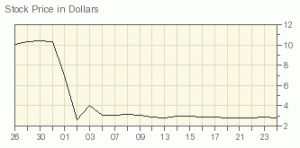Given my interest (some say obsession :) with producing high quality software, I am always on the lookout for stories highlighting the need for quality. So I was intrigued to hear a few weeks ago that the U.S. global financial services firm Knight Capital Group that lost over $440 million dollars in under one hour of trading due to a critical defect in newly installed trading software.
As bad as this sounds already, the broader ramifications were worse. This loss represented nearly four times Knight's 2011 profit, and instantaneously depleted Knight's capital, pushing it to the brink of bankruptcy. Since Knight is the one of the largest providers of market making services in the U.S., Wall Street essentially was forced to bail out the company to avoid a potential financial disaster in the markets. The New York Stock Exchange even had to formally submit a rules change to the U.S. Security and Exchange Commission to permit these emergency bailout actions. Existing shareholders of Knight experienced a bloodbath: their shares were diluted roughly 70% and the share price dropped to roughly one-quarter its original value as per the diagram below
Knight's story highlights the trend of software becoming more and more critical to organizations. David Kirkpatrick of Forbes magazine coined the phrase "Now every company is a software company" to represent this new reality. This means that the impact to organizations of poor quality software is greatly magnified. Alistair Cockburn has defined a scale of software criticality comprised of the following levels: Life, Essential money, Discretionary money, and Comfort. Alistair uses this scale (along with other factors) to tailor the method used to develop software.
Like Knight, many organizations now have software at the essential phase of criticality, but have not adjusted their processes to compensate. I suspect that they will only come to appreciate the need for high quality after experiencing the high cost of poor quality.
References regarding Knight's software defect:
- Knight press releases covering the event: August 2, 2012 and August 6, 2012
- News article summarizing the impact
